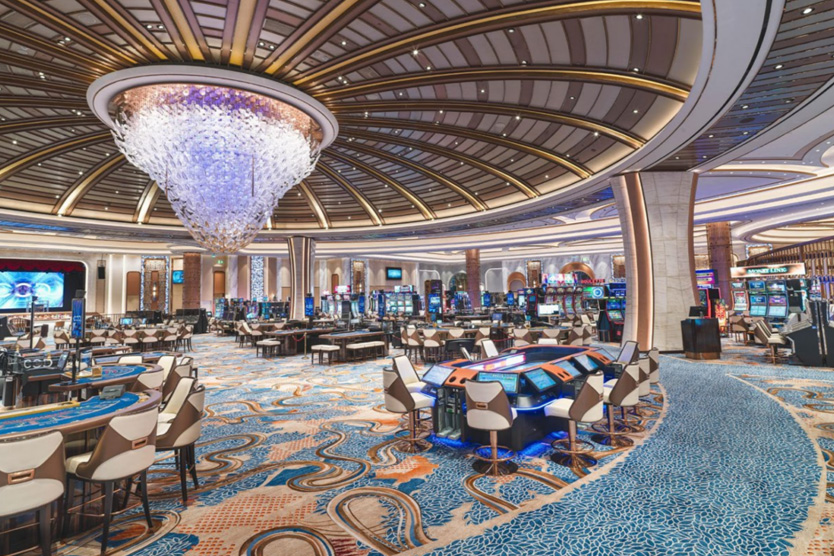Why Sri Lanka is Betting on Casinos
Sri Lanka has long attracted tourists with its beaches, safaris, and Buddhist monuments. Now the authorities want to add gambling to this list. The President hopes that casinos will help attract wealthy players from India and China and provide the economy with a new influx of foreign currency.
Until recently, the country had a few small establishments, but this month, the $1.2 billion City of Dreams complex opened in Colombo. The project was implemented in partnership with John Keells Holdings and Macao-based operator Melco Resorts & Entertainment. The oceanfront resort features 800 rooms, a shopping mall, and conference halls. The opening was accompanied by a performance by actor Hrithik Roshan, one of Bollywood’s most popular stars.
Gambling existed in Sri Lanka before but was not significant. With the arrival of City of Dreams, clients from all over the world will come here; I am confident they will choose Sri Lanka.
The development of casinos in Sri Lanka is part of a large-scale government plan to attract tourists. The government aims to increase their number by 50%, reaching 3 million people this year. Forecasts suggest this will also impact industry revenues: they could grow to $5 billion, compared to $3.7 billion last year.
The main sources of tourist flow are expected to be India and China. India, where casinos are only permitted in certain states, already holds a leading position: its citizens made up almost a quarter of the two million tourists in Sri Lanka last year. Chinese visitors accounted for 7% of the flow. Both countries maintain close economic ties with Colombo, and their citizens can enter without a visa.
In addition to developing casino infrastructure, the Sri Lankan parliament has also passed a law regulating gambling. The document provides for the creation of an independent body that will oversee sports betting, online platforms, offshore operations, and casino activities in Colombo.
However, experts criticize the law. In their opinion, it does not cover state lotteries, does not include representatives from the tourism industry, and sets low fines for violations.
How Tourism is Becoming a Growth Driver After the Country’s Default
In 2022, Sri Lanka faced its most severe financial crisis in decades. The causes included high external debt—about $51 billion—the inability to service it, and the loss of foreign exchange reserves needed to import fuel, medicine, and food. The situation was worsened by a drop in tourism revenue during the pandemic.
In April 2022, the country declared a default on its external obligations for the first time in history. Amid the crisis, mass protests began: people took to the streets due to shortages of fuel and food and rapidly rising prices, leading to the resignation of the former president.

To stabilize the economy, the government reached an agreement with the International Monetary Fund on a $2.9 billion aid package. This allowed for partial replenishment of foreign exchange reserves, reduced inflation, and restored supplies of vital goods. However, it was in 2024 that the country’s economy began to show signs of recovery—GDP growth for the year was about 5%.
Tourism became one of the key sources of economic revival. In the first half of the year alone, the country welcomed 1.01 million tourists, bringing in $1.5 billion. Last year, the sector accounted for about 4% of GDP, compared to 2.5% in 2023, and the authorities plan to increase this figure to 10%.
Today, tourism ranks third among sources of foreign exchange earnings after remittances and clothing exports. Although textiles remain the main channel for foreign currency, the tourism industry provides a rapid inflow of cash and supports demand for domestic services. The development of casinos is seen by the authorities as a way to attract wealthy tourists.
In the next couple of years, we will focus on short-term goals and increasing tourist flow. But in the long term, we plan to develop
beaches
Beaches are natural landforms along coastlines that have existed for millennia, formed by the action of waves and tides. While not man-made, they hold immense cultural and historical significance as centers for recreation, trade, and community gathering throughout human history.safaris
Safaris originated as 19th-century hunting expeditions in East Africa, popularized by European explorers and colonial figures. Today, they have evolved into wildlife-viewing journeys focused on conservation and photography, primarily across African nations like Kenya, Tanzania, and South Africa. These guided tours offer immersive experiences in national parks and game reserves to observe animals like lions, elephants, and giraffes in their natural habitats.Buddhist monuments
Buddhist monuments are sacred structures built across Asia to honor the Buddha and facilitate spiritual practice. Their history spans over two millennia, beginning with stupas that enshrined relics after the Buddha’s death, and later expanding to include temples, monasteries, and colossal statues. These monuments reflect the spread of Buddhist teachings from India to countries like Sri Lanka, China, and Japan, evolving in architectural style with each culture.City of Dreams
The City of Dreams is a major integrated resort and casino complex located in Macau, China. It opened in 2009 and is owned and operated by Melco Resorts & Entertainment, becoming a premier destination that blends luxury accommodations, high-end retail, and world-class entertainment. The resort was developed as part of Macau’s economic strategy to establish itself as a global tourism and gaming hub, often referred to as the “Las Vegas of Asia.”Colombo
Colombo is the vibrant commercial capital and largest city of Sri Lanka, with a history dating back over 2,000 years as a ancient port. It was a major trading hub for Arab, Chinese, and Roman merchants and was later colonized by the Portuguese, Dutch, and British, whose architectural influences are still visible today. The city is known for its bustling markets, colonial-era buildings, and the beautiful Galle Face Green promenade.John Keells Holdings
John Keats House is a historic museum in London dedicated to the life and work of the renowned English Romantic poet. It was his final home, where he lived from 1818 to 1820 and wrote some of his most famous works, including “Ode to a Nightingale.” The house now contains a collection of his manuscripts, letters, and personal items, preserving his legacy.Melco Resorts & Entertainment
Melco Resorts & Entertainment is a leading developer, owner, and operator of integrated resort facilities in Asia, primarily in Macau. It was founded in 2004 by Lawrence Ho and is renowned for its luxury properties, including the City of Dreams and Studio City. The company has played a significant role in the development of Macau into a world-leading gaming and entertainment destination.Bollywood
Bollywood is the informal term for India’s Hindi-language film industry, based in Mumbai, which began with the release of the first Indian sound film, *Alam Ara*, in 1931. It is the largest film producer in India and one of the largest centers of film production in the world, renowned for its elaborate musical numbers, dramatic storylines, and vibrant cinematography.



